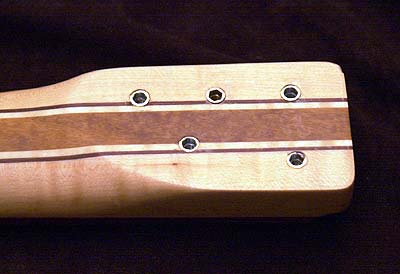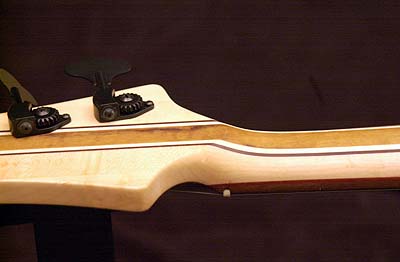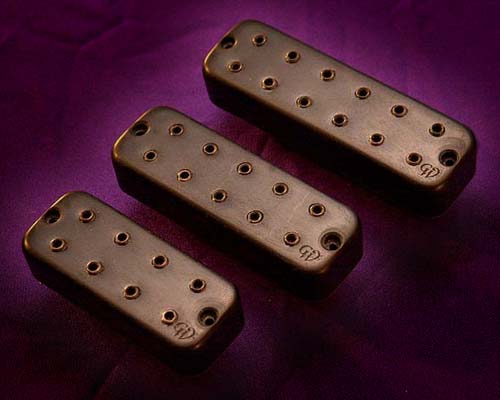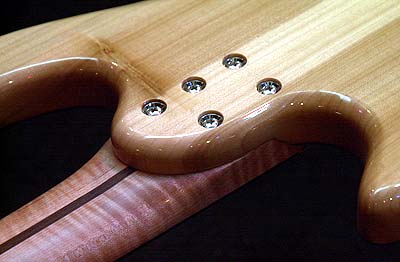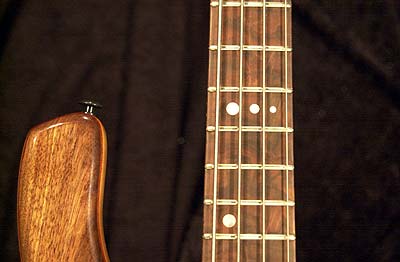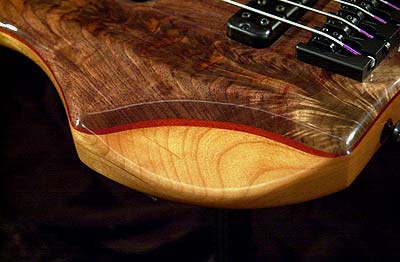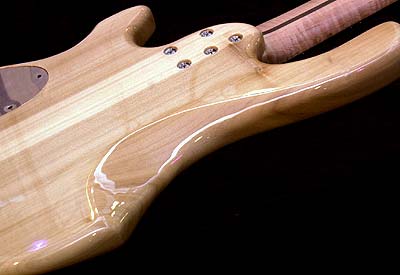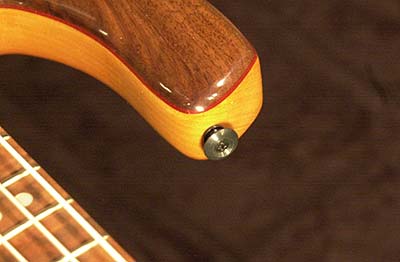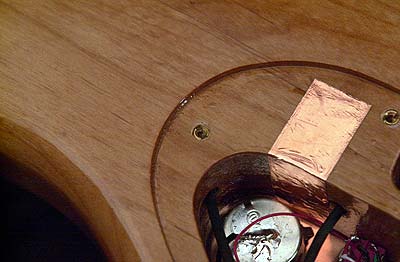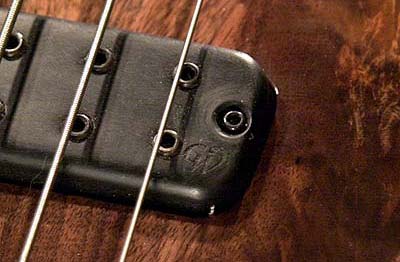

 |
||||||||||
DC-2B HRV "Hot Rod Vintage" series Features and Specifications |
||||||||||
 |
The Inspiration for the HRV Series
I really love this new series of basses, a lot of consideration, time, energy and emotion went into their design and features.
I approached these basses from my playing preferences perspective even more so (if that is possible) than with my neck through
series. Why? Well, I am an active bassist as well, and I have this either gorgeous or seriously ugly - depending on your point of view
- old beat up `71 Fender Precision Bass that has been my main bass for... oh, about 18 years now. I've had other bassists
who don't particularly like that style of bass or the brand in particular who, after playing it have tried to buy it from me.
Of course, it is not for sale.
|
|||||||||
 |
Comfortable right out of the case
Now, that is not to say that I wanted to produce a reliced instrument, I still wanted my new bolt neck basses to be new. But I
endeavored to put in certain features and other things that would produce an instrument that would feel familar and comfortable right
out of the case. As a player, the overall feel and "vibe" of the instrument, which includes
how it sounds and plays, is everything to me. If it feels right with the right vibe, it inspires me and my playing shows it.
|
|||||||||
 |
The HRV Neck
I believe that the many of the things that make for a great feeling and playing 4 string neck don't necessarily work as well for a 5 string
or 6 string neck, and vice versa. So, each GW HRV neck has a different fingerboard radius and neck profile from the others. All of them have
about the same taper from front to back, from 7/8" under the 1st fret to just a touch over 1" at the 21st fret. A 4 string
has a 10" radius, a 5 string has a 12" radius and the 6 string has a 16" radius fingerboard. The neck profiles are a bit different for each as well.
I'm not a fan of really thin and small necks, so the 4 string neck is a bit "beefier" for more sustain and punch. The 5 and 6 string both have
a asymetrical profile, a bit thicker and rounder under the low side of the neck and just a bit thinner and slimmer profile under the higher strings.
This makes for a neck that sits very comfortably in your hands gig after gig, session after session.
|
|||||||||
 |
GW HRV "Hot Rod Vintage Pickups. Humbucker in the neck and a Quad coil at the bridge!
Want smooth, creamy, deep tone? How about sharp, overdrive that bites if you push it just right? Sure! Now how about
both out of the same bass? Not possible? It is with the new HRV "Hot Rod Vintage" pickups. The neck pickup is a dual coil humbucker
that is wound to be hot enough if pushed, but to really give that smooth and deep for days sound. Flip the switch and it goes from
full series humbucking mode to parallel for slightly reduced output, a drop in the lows and mids and increased high end response.
|
|||||||||
 |
Neck heel and body contours right shape and where they need to beBODY CONTOURS TEXT GOES HERE
|
|||||||||
 |
Details, details, details....Attention to detail is everything, right? I couldn't agree more and didn't want to cut any corners with the HRV Basses. So I looked to see what details I could improve on. What could be better than a plastic rear control cavity cover with sheilding tape or sheilding paint? How about one made from solid copper and a copper plate in the bottom of the control cavity as well! And again, threaded brass inserts for the control cover screws.The controls are easy to reach but out of "strike zone" so you can slap away or even bang out chords with a pick and not worry about hitting a knob. They're also laid out in a basic "volume - volume - tone" pattern for ease of use and a familiar feel. There is a switch for each pickup; a series / parallel switch for the neck pickup and a psuedo "coil tap" switch for Quad Coil bridge pickup. The result? An almost infinite number of sound options to go from smooth and deep, to bright and biting - all without a preamp and batteries to change.
|
|||||||||
 |
DC-2B HRV "Hot Rod Vintage" series Price List
|
|||||||||
"The Bass Kahuna TM", "GW Basses TM" and the "GW " logo are Trademark 2003
This site best viewed at a minimum resolution of 1024 x 768, and with IE 4.0 or higher, or NetScape 6.2 or higher
![]()

